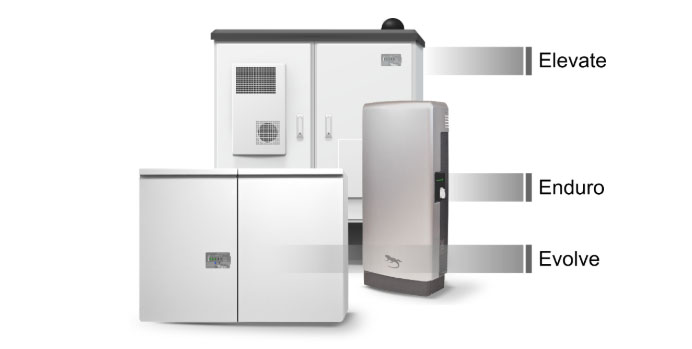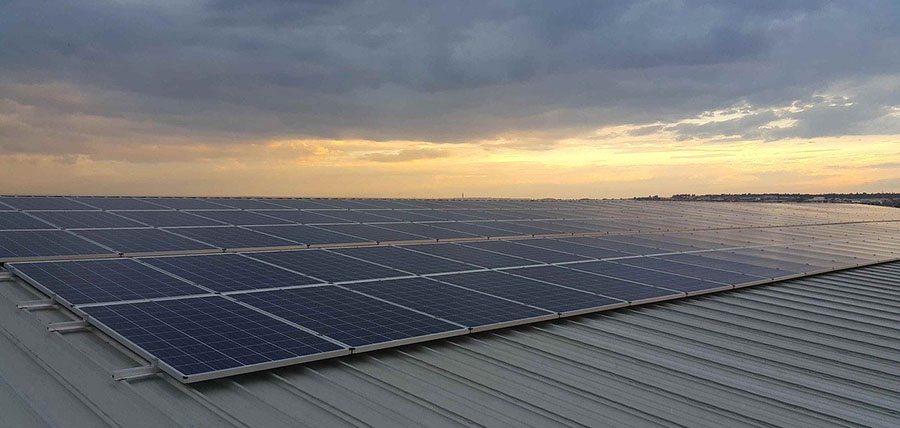TICKERS: OTCMKTS, PWER,
How to Play the Cleantech Energy Boom: Pavel Molchanov
Interview
Source: Zig Lambo of The Energy Report (3/29/12)
 With ever-higher oil prices encouraging record investment interest, the cleantech energy sector looks poised for leaps and bounds. The most successful investors will be those who understand the challenges facing not only different industry segments, but individual companies within the same segment. In this exclusive interview with The Energy Report, Raymond James Energy Analyst Pavel Molchanov explains the four principal areas that comprise the cleantech arena—wind, solar, smart grid technology and biofuels—focusing on case-by-case investability. He also shares some names that just might be the next big winners in this rapidly developing space.
With ever-higher oil prices encouraging record investment interest, the cleantech energy sector looks poised for leaps and bounds. The most successful investors will be those who understand the challenges facing not only different industry segments, but individual companies within the same segment. In this exclusive interview with The Energy Report, Raymond James Energy Analyst Pavel Molchanov explains the four principal areas that comprise the cleantech arena—wind, solar, smart grid technology and biofuels—focusing on case-by-case investability. He also shares some names that just might be the next big winners in this rapidly developing space.
Pavel Molchanov: The cleantech arena comprises four key areas in terms of what's investable in the public equity markets today. Solar carries the biggest market caps. Solar power companies in the public market tend to mainly be in the photovoltaic (PV) hardware manufacturing arena. These include producers of wafers, cells, modules and inverters, and to a much lesser extent, companies engaging in project development and system installation.
The biofuels subspace is quite a bit smaller in market cap than the solar arena, but it's been growing more quickly because most of the recent initial public offering (IPO) activity in cleantech has been in biofuels. Many investors associate biofuels with ethanol, and there are still a few publicly traded corn ethanol producers. But most of the recent IPO activity involves more advanced, next-generation biofuels, such as cellulosic, algae and other emerging products.
There is also the wind arena. This one is more difficult to invest in because many of the companies with exposure to the wind industry are highly diversified. Some of the largest industrial conglomerates are in the wind turbine manufacturing business. There are many overseas companies in this space, as is also true of solar. But whereas many of the international solar companies, especially from China, trade in the U.S., when it comes to wind, many of the companies trade in overseas markets, such as Spain and Germany.
Lastly, there is the smart grid subspace, which is at the crossroads of cleantech and communications. Similar to wind, many of the companies with smart-grid exposure are larger businesses, both in the information technology sector as well as the industrial sector. But there are some smart grid pure plays that are publicly traded.
TER: As far as stages of development, how evolved are the various industries?
PM: Let's take a look at solar and wind first. The global solar market last year was approximately 27 gigawatts (GW), whereas the global wind market was about 50% larger at 41 GW. Both markets are in the tens of billions of dollars, in terms of total industry revenue, and quite large as far as cleantech goes. Still, the market share of both solar and wind in total electric generation remains very low. In the U.S., solar is well below 0.5% of total electricity sales and wind is about 2%. In some European countries like Germany, the numbers are higher, but in general they are quite low.
We have to differentiate between first-generation and second-generation biofuels. Corn ethanol already encompasses about 10% of the gasoline market in the U.S., and sugarcane ethanol is even more prevalent in Brazil. Next-generation biofuels, on the other hand, tend to be very early-stage. Generally speaking, the cellulosic and algae companies are pre-revenue, pre-production businesses. It's going to take two to three years before the industry scales up and enters the mainstream. Certainly, it's going to be smaller in gallon terms than the corn ethanol market well into the second half of the decade, possibly even until 2020.
Next is the smart grid industry, which encompasses a lot of different products. Smart meters are perhaps the widest known product in this subsector, and they have been unquestionably ramping up in adoption both in North America and elsewhere. As of the end of last year, approximately 27 million (M) smart meters had been installed in the U.S. There are many more in Europe, China and Brazil as well. But there are other elements of smart grid technology that are a little bit more difficult to measure because they don't lend themselves to counting units of hardware that are installed—things like demand response.
TER: The more established companies in ethanol, wind and solar have their basic technologies already in place. Are smaller companies largely focused on the research and development (R&D) stage, and therefore not generating much cash flow?
PM: Essentially, all of the publicly traded companies in the solar and wind arenas are currently generating commercial product sales. In the smart grid arena, that is also true. The one area where there is a significant number of public companies that are still in the pre-revenue commercialization stage is advanced biofuels. Over the past two years, there have been more IPOs of biofuel companies than all other cleantech companies put together. The vast majority of those have been pre-production, early-stage businesses.
TER: Government subsidies have been instrumental in giving alternative energy and fuels a kick-start to compete with conventional oil and gas. Will these new technologies be able to compete without subsidies?
PM: Yes, and again we have to look individually at the different subsectors within cleantech. In solar, the vast majority of demand for PV right now is in Europe. Last year, it was about 70%. A few years ago, it was even higher. Just about every major country in Europe has what's called a solar feed-in tariff, which is a guaranteed purchase price for solar electricity that is set by the government. Utilities have to purchase the solar electricity that's produced both by individual households that have a solar panel on the roof and solar developers with their own solar farms. Because it's government-set and government-guaranteed, the economics are extremely visible and secure.
It's not a subsidy in the sense of a direct cash payment by the government because the utilities pay the money and ultimately pass on the costs to the rate payers, but clearly it is an incentive. In the U.S., there are a few small programs in a couple of states, but certainly nothing comparable to Europe, which is why last year Germany installed more solar in the month of December than the U.S. did in the last two years combined. Keep in mind that Germany has one-quarter of the U.S. population and a lot less sunlight. So subsidies can be very important, and solar is a good example of that.
In the renewable fuel arena, the dynamics are a little bit different. With oil prices in the triple digits, it's quite possible for renewable fuels to be cost competitive relative to gasoline or diesel without subsidies. The fuel tax credit for corn ethanol that had been in place for decades went away Dec. 31, 2011, and the U.S. continues to blend ethanol in billions of gallons annually. Government support is, however, important for the development of the next-generation biofuel industry. The greatest help comes from Department of Energy and Department of Agriculture loan guarantees to these early-stage companies.
Many early-stage businesses, even if they have a good technology platform and a well-defined business plan, have difficulty getting financing. Clearly, the IPO option is open, and many companies have been going public. Commercial lenders are certainly reluctant to lend to pre-revenue businesses in many cases, so the federal loan guarantees have been very valuable. The Department of Defense has also been quite active in supporting advanced renewable fuel through R&D partnerships, and in many cases, purchasing fuels from these early-stage businesses helps provide these companies with cash as well as the seal of approval from the Pentagon, which is the biggest energy consumer in the U.S.
TER: When oil prices were down at $40 or $50/barrel (bl), it made it pretty tough for alternative energy companies to compete. Have higher oil prices changed the economics for cleantech companies?
PM: Absolutely. At $40-50/bbl oil, it's very difficult for most renewable fuels to compete strictly on economics. I will note in this context that many of the renewable fuel companies have been pursuing opportunities in the chemicals arena. You might ask, why would they sell into the chemicals market? The global chemicals industry is about a $3 trillion (T) market, certainly smaller than transportation fuels, but still enormous in absolute terms, and a huge addressable market. Most importantly, pricing and margins tend to be higher for chemicals, especially specialty chemicals, than for commodity transportation fuels. So many of the companies that are developing next-generation biofuels, both public and private, have been focusing their early stages of commercialization on selling into the chemicals industry, because it's easier for them to make money without subsidies.
TER: But the volumes are much lower, correct?
PM: Three trillion dollars is the size of the overall global chemical industry, and within that, specialty chemicals are about $200 billion. For companies that in many cases have zero production today, that is more than enough running room. The name of the game here is market penetration. The addressable market is very large indeed.
TER: What technologies hold the greatest potential for longer-term economic success at this point?
PM: One of the difficulties in investing in cleantech has been commoditization. Five years ago, solar panel manufacturing was a relatively specialized business that tended to carry pretty high margins, 25–30% or even higher. Since then, the Chinese competitors in solar have been so aggressive in grabbing market share and expanding production that pricing has cratered amid this severe industrywide glut of solar panels. Margins have dramatically compressed to barely 10% on average for just about everyone. That's the lesson of commoditization. Therefore, I would encourage investors to focus on technologies across cleantech that do not have the same degree of commoditization.
In the long run, perhaps just about everything can be commoditized, but certainly for the foreseeable future, there are a few areas that stand out. For example, the market for solar inverters tends to be significantly less commoditized than solar cell or solar panel manufacturing. Why? For one thing, there are a lot fewer companies making inverters. It's a more sophisticated and fairly complex piece of electrical engineering compared to a solar panel. There is also not the same element of competition from China: There are just a few significant solar inverter producers in China compared to at least 100 on the solar panel side.
Within the biofuels sector, next-generation biofuels are all about intellectual property—not simply converting corn into corn ethanol at very slim margins. Each company has its own "secret sauce," or production process and technology platform, and there is a myriad to choose from. While the different players in this arena are still in their early stages and have lots of execution risk, over time they should have the ability to generate pretty good margins because they benefit from their own internally developed intellectual property.
TER: What criteria do you use in deciding which high-potential companies to cover?
PM: My coverage encompasses 21 companies, both good and bad. So, by no means do I recommend every company that I cover. In fact, at this point, I have a fairly large number of sell-rated stocks simply because of some of the industrywide challenges I mentioned earlier, especially in solar. It's certainly important to look at investability. Wind is a very interesting market with a large global footprint. But it's very difficult for investors to play wind because, again, many of these companies are mega-conglomerates for whom wind is a tiny portion of their business.
Therefore, I tend to focus more on the cleantech pure plays. Within every industry, there are companies that are in a better competitive position than others. So we have to look at everything case-by-case. It's very hard to make a universal, far-reaching call regarding whether a particular subsector is now the right or wrong place to invest. The solar industry is facing a lot of headwinds and yet there are still companies in that space that are quite profitable and successful.
TER: Can you tell us about some of these companies that you cover and why you like them?
PM: Within solar, Power One Inc. (PWER:NASDAQ) is the world's second-largest manufacturer of solar inverters. This is a company that has been consistently profitable in recent years. Gross margins have been under some pressure, but nothing compared to the pressure that solar panel makers have faced. It has no debt on its balance sheet and about $200M in cash. It's actually generating free cash flow just about every quarter. It has been repurchasing some stock, and I think there is lots of room for it to accelerate repurchases in 2012 and beyond.
In biofuels, I would mention two names. One is KiOR, Inc. (KIOR:NASDAQ), a true cellulosic biofuel company. It takes woodchips, uses a catalytic process very similar to a refining catalytic process and turns those woodchips into what we call biocrude, or renewable crude oil. It actually is crude oil but unlike petroleum, it is entirely renewable. That crude oil can be refined using normal refining infrastructure into just about any finished product—gasoline, diesel, jet fuel, you name it.
I would also highlight Solazyme Inc. (SZYM:NASDAQ), which is an algae-based company. Unlike KiOR, which uses a thermochemical process, Solazyme uses a fermentation or biological process utilizing its internally developed algae. It needs to use a relatively more expensive source of feedstock, sugar cane, rather than KiOR's cellulosic biomass. The tradeoff is it can sell into very high-value markets such as cosmetics and specialty chemicals. In fuels, it would tend to focus on the most high-value products, such as jet fuel.
TER: What sort of revenues are these companies generating?
PM: KiOR is entirely pre-production. Its first plant is expected to come online late 2012. Solazyme has a bit of product revenue for the time being, but in 2013, its first large-scale fuels and chemicals plant is expected to start up in Brazil. Both companies are in their early stages of commercialization.
TER: Do you have any parting thoughts you'd like to leave with us?
PM: The key message to investors is twofold. Number one, focus on companies with a defensible technology platform and distinct intellectual property, rather than a pure commodity business. Number two, be very company-focused when looking at cleantech. Don't make any far-reaching or sweeping conclusions about cleantech as a whole or even within individual subsectors, because there is so much differentiation from company to company. Companies that may look superficially similar can have very different fundamentals.
TER: Thanks for joining us today.
PM: Thank you for having me.
Pavel Molchanov joined Raymond James & Associates in June 2003 and has worked as part of the energy research team since that time. He initiated coverage on the alternative energy sector in fall 2006. Molchanov became an analyst in January 2006. He graduated cum laude from Duke University in 2003 with a Bachelor of Science degree in economics with high distinction.
Want to read more exclusive Energy Report interviews like this? Sign up for our free e-newsletter, and you'll learn when new articles have been published. To see a list of recent interviews with industry analysts and commentators, visit our Exclusive Interviews page.
DISCLOSURE:
1) Zig Lambo of The Energy Report conducted this interview. He personally and/or his family own shares of the following companies mentioned in this interview: None.
2) The following companies mentioned in the interview are sponsors of The Energy Report: None. Streetwise does not accept stock in exchange for services.
3) Pavel Molchanov: I personally and/or my family own shares of the following companies mentioned in this interview: None. I personally and/or my family am paid a small retainer by the following companies mentioned in this interview: None. I was not paid by Streetwise for participating in this story. Raymond James & Associates makes a NASDAQ market in shares of KiOR, Inc. and of Power-One, Inc.



























































